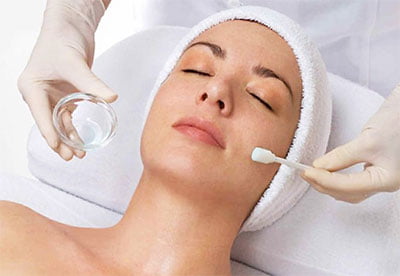
Chemical peels are a popular and effective way to revitalize your complexion and achieve smoother, more radiant skin. If you're new to the world of chemical peels, it can be overwhelming to know where to start. That's why we've put together this beginner's guide to help you understand what chemical peels are, how they work, and how you can incorporate them into your skincare routine.
First, let's start with the basics. Chemical peels are cosmetic treatments that involve applying a chemical solution to the skin to remove the top layer of dead skin cells. This process exfoliates the skin and stimulates cell turnover, resulting in a smoother, brighter complexion.
There are different types of chemical peels available, ranging from mild to deep. The strength of the peel determines how deeply it penetrates the skin and the extent of the exfoliation. Mild peels, such as alpha hydroxy acid (AHA) peels, are gentler and work on the surface level of the skin.
Before getting a chemical peel, it's essential to consult with a skincare professional to determine the right type of peel for your skin concerns and skin type. They can assess your skin and recommend the most appropriate peel strength and formulation to achieve the best results.
When it comes to incorporating chemical peels into your skincare routine, start by introducing them gradually. Begin with a mild peel and gradually increase the strength as your skin builds tolerance. It's also essential to follow up with a proper skincare regimen to maintain the results of the peel and support skin healing.
Chemical peels can be done at a dermatologist's office, medical spa, or at-home with over-the-counter peel kits. Professional peels are typically more potent and provide faster results, while at-home peels are milder but offer convenience and affordability. If you're new to chemical peels, it may be best to start with a professional treatment to ensure safety and efficacy.
After getting a chemical peel, you may experience some side effects such as redness, peeling, and sensitivity. These are normal and typically subside within a few days to a week, depending on the strength of the peel. It's essential to avoid picking at the skin or exposing it to harsh chemicals or sunlight during the healing process to prevent complications.
With regular use, chemical peels can help improve the overall quality of your skin and address various skin concerns. They can enhance the effectiveness of your skincare products by allowing them to penetrate deeper into the skin and work more efficiently. Incorporating chemical peels into your skincare routine can help you achieve a brighter, smoother complexion and boost your confidence.
In conclusion, chemical peels are a fantastic way to revitalize your complexion and achieve glowing, healthy skin. By understanding the different types of peels, consulting with a skincare professional, and following a proper skincare regimen, you can reap the benefits of chemical peels and improve the overall appearance of your skin.